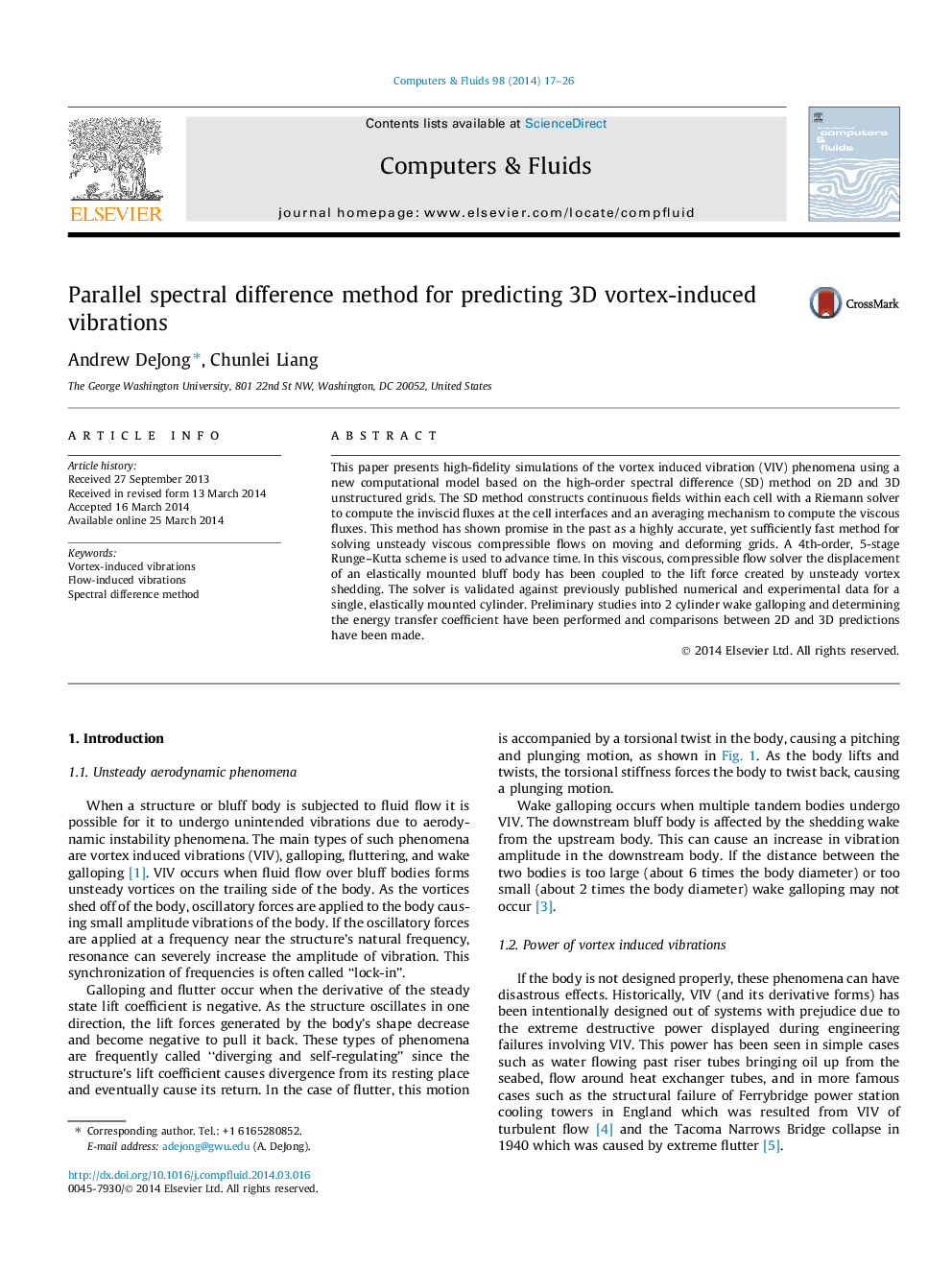| Article ID | Journal | Published Year | Pages | File Type |
|---|---|---|---|---|
| 756487 | Computers & Fluids | 2014 | 10 Pages |
•High-order numerical predictions of vortex-induced vibrations.•Both single cylinders and tandem configurations examined.•Spectral difference coupled with average acceleration within Runge–Kutta method.•Vibration amplitude increases when tandem configuration used.
This paper presents high-fidelity simulations of the vortex induced vibration (VIV) phenomena using a new computational model based on the high-order spectral difference (SD) method on 2D and 3D unstructured grids. The SD method constructs continuous fields within each cell with a Riemann solver to compute the inviscid fluxes at the cell interfaces and an averaging mechanism to compute the viscous fluxes. This method has shown promise in the past as a highly accurate, yet sufficiently fast method for solving unsteady viscous compressible flows on moving and deforming grids. A 4th-order, 5-stage Runge–Kutta scheme is used to advance time. In this viscous, compressible flow solver the displacement of an elastically mounted bluff body has been coupled to the lift force created by unsteady vortex shedding. The solver is validated against previously published numerical and experimental data for a single, elastically mounted cylinder. Preliminary studies into 2 cylinder wake galloping and determining the energy transfer coefficient have been performed and comparisons between 2D and 3D predictions have been made.
